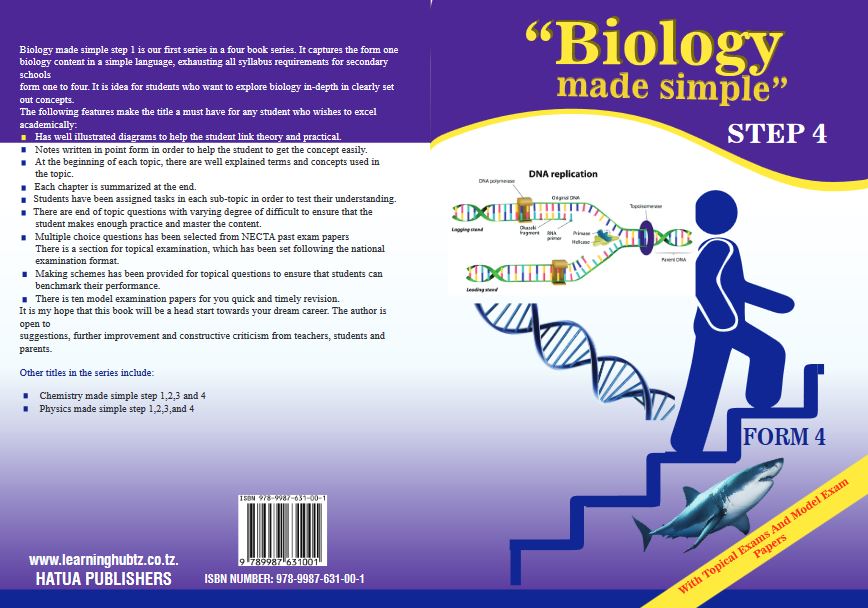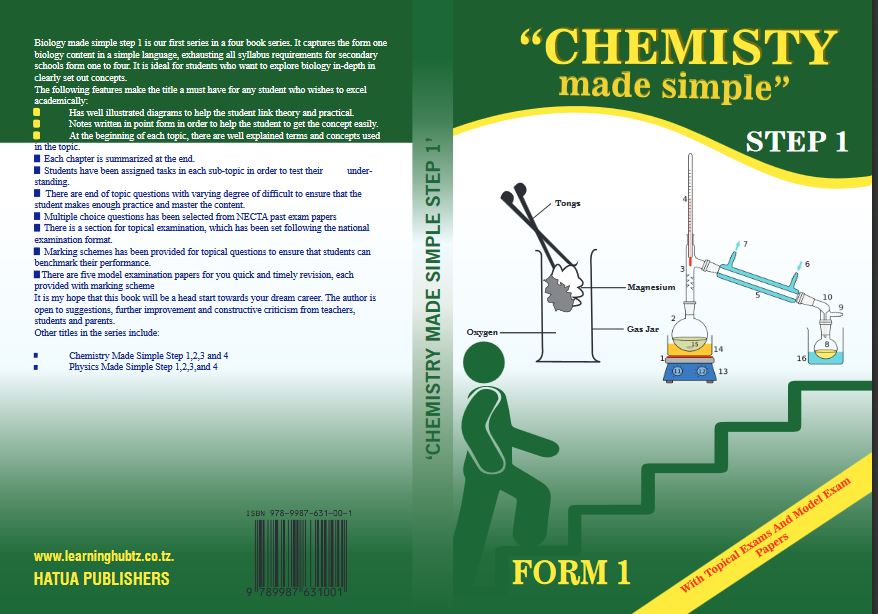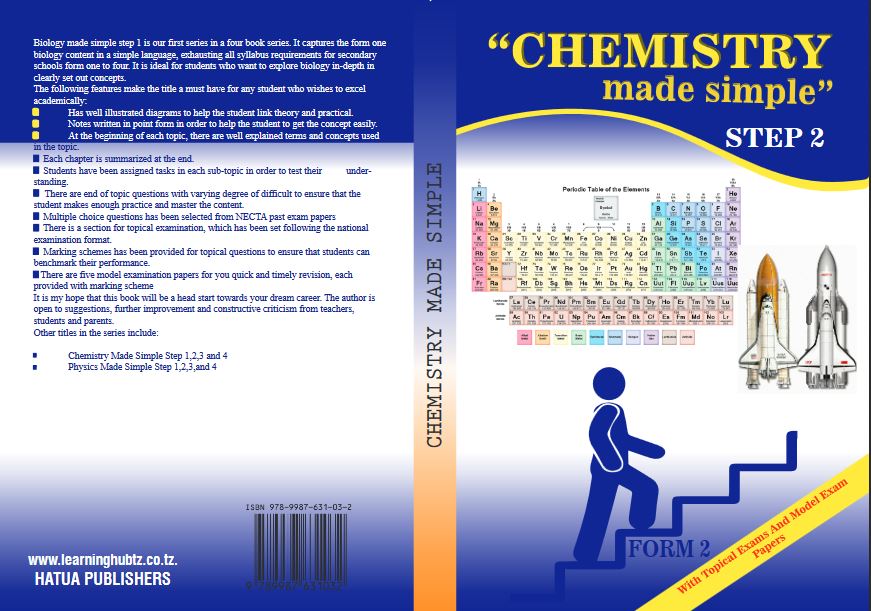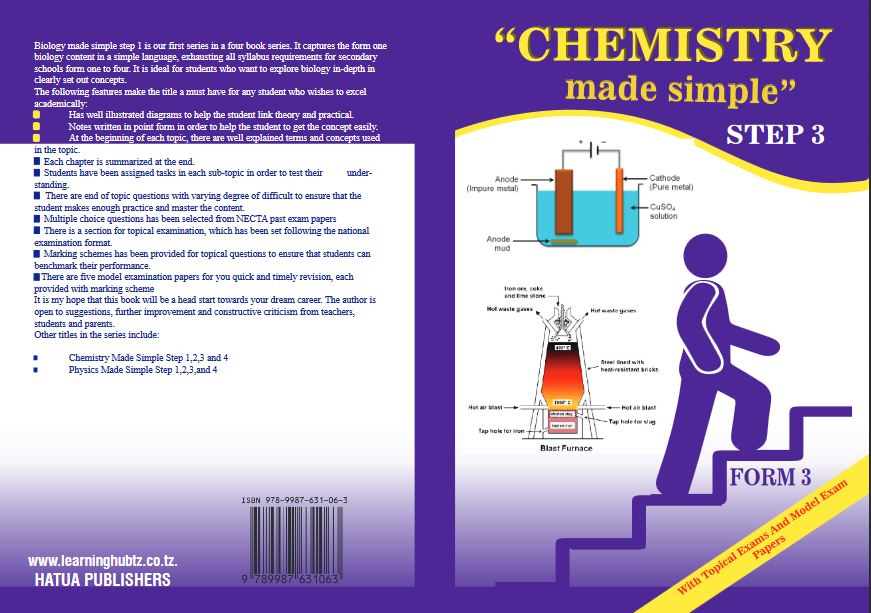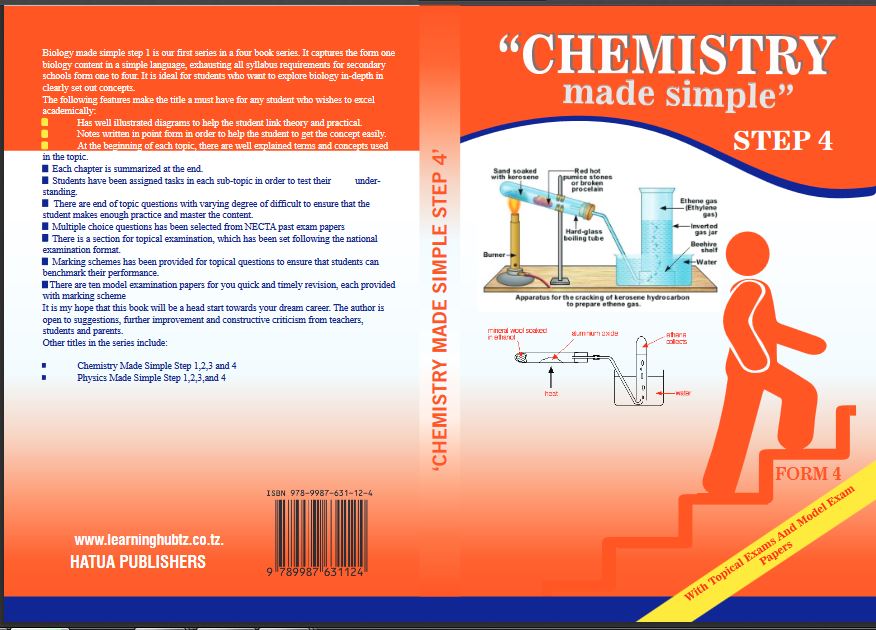THE OFFICE OF THE PRESIDENT, REGIONAL ADMINISTRATION AND LOCAL GOVERNMENT.
SECONDARY EXAMINATION SERIES
MARCH 2025
PHYSICS FORM FOUR
TIME: 2:30HRS
Instructions
1. This paper consist of sections A, B and C with total of eleven (11) questions
2. Answer all questions in sections A and B and two (2) questions from section C.
3. Section A carries sixteen (16) marks, section B fifty four (54) marks and section C carries thirty (30) marks
4. Non-Programmable calculators and mathematical table may be used.
5. Cellular phones and any unauthorized materials are not allowed in the examination room.
6. Where necessary the following constants may be used:
- Acceleration due to gravity, g = 10 m/s 2
- Density of water = 1.0 g/cm 3
- Linear expansivity of brass = 19 × 10 −6°C −1
- Linear expansivity of iron = 10 × 10 −6°C −1
- Specific heat capacity of aluminium = 900 J/kg°C
SECTION A (16 Marks)
Answer all question in this section
1. For each of the items (i –x) choose the most from the given alternatives and write its letter beside the item number in the answer sheet (booklet) provided.
i) Heat would be lost in the thermos flask if the walls of the glass container were not coated with silver. Which process contributes to this kind of heat loss?
- Radiation
- Conduction
- Convection
- Absorption
- Transmission
ii. In a light experiment, observing an object through a certain material showed that less light was transmitted and the image was distorted. Which type of material was used
- A translucent material
- An opaque material
- A luminous material
- A transparent material
- A non-luminous material
iii. Why oil is used as lubricant
- It has low density
- It is highly viscous
- It is flammable
- It is less viscous
- It is costle
iv. When silicon element is doped with phosphorus atom, it produces:
- P-type semiconductor
- Force
- intrinsic semiconductor
- bipolar semiconductor
- n-type semiconductor
v. A body is said to be in equilibrium if
- It moves with uniform speed
- The net force acting on it is zero
- The upward and downward forces are equal
- Its center of gravity is low positioned
- Its center of gravity is high
(vi) A bus carrying heavy load on its top carrier is likely to overturn because;
- It runs faster
- Its center of gravity is low
- Its center of gravity is high
- Its equilibrium is neutral
- It is at stable equilibrium
(vii) The extremely narrow bore on the liquid-in-glass thermometer in which the thermometric liquid flows during expansion or contraction is known as;-
- Capillary tube
- Steel index
- Stem
- Constriction
- Bore
(viii) Which of the following conditions must be satisfied for a body to float?
- Apparent weight is equal to the difference between real weight of the body and itsupthrust
- Upthrust equal to the weight of the fluid displaced
- Real weight of the body equals to its upthrust
- Apparent weight is equal to the product of real weight of the body and its upthrust
- Density of a body is equal to the density of surrounding fluid
ix. Form four students were discussing on the properties of matter, where one of them said that solid has definite shape and all members of the group agreed. Which one could be the reason behind for solid to have definite shape?
- It has high adhesive force
- It has high surface tension
- It has low viscosity
- It has high cohesive force
- It has low adhesive force
x. ANGINJA was in the car, she tried to look at her friends who were outside of the car through a glass window, but she did not see them well. You as a form four student, what conclusion could you make on that glass window?
- It is transparent material
- It is translucent
- It is opaque
- It is not cleaned
- It is black
- Match the colours from List B which absorbed by the colour in List A by writing the letter of the correct response beside the corresponding item number in the answer booklet provided. (06 Marks)
| List A | List B |
|
|
SECTION B. 70 MARKS. ANSWER ALL QUESTIONS
3. (a)(i) What do you understand by the term specific heat capacity and specific latent heat of vaporization
(ii) Explain the factors that affect boiling point of water.
(b) What is the index of refraction for a certain medium if the light in air enters the medium at an angle of 30° and refracted at 22°C?
4. (a)Describe how a lens camera operates the same way as human eye. Give three points
(b) Briefly explain how conduction of heat can be applied in your daily life (Three reasons)
5. (a)Briefly explain why the doors of oven are made loosely fitting
(b) A steel bridge over a motor way is 20m at 0°C. How much longer is it at 20°C?
6. a) State the relationship between pressure, force and area.
b) Explain why one feels not comfortable when he/she lift a bucket of water by its handle made of thin metal. What will be the pressure experienced if the handle is made of thicker metal?
c) The mss of the cube is 120kg, if it measures 50cm x30cm x20cm, what is maximum pressure that it can exert?
7. a) A positively charged rod is brought near body A and B if body A is at a distance of 1cm and body B is a distance of 3cm, which of the two bodies will be attracted more?
b) i) What happens when two positively charged bodies brought into contact?
ii) Explain why a pieces of paper attracted by a plastic charged pen after few seconds fell off?
8. (a) Describe how a lens camera operates the same as human eye. Give three points (06 marks)
(b) Briefly explain how conduction of heat can be applied in your daily life (three reasons) (04 marks)
9. Weather forecasting shows that there is the possibility of occurring earthquake in Mtakuja village. The villagers are not aware with such disaster. As physicist, make villagers aware with
- Meaning of earthquakes ( 02 marks)
- The four key indicators observed before an earthquake occurs (04 marks)
- Suggest four precautions to be taken by villagers during an earthquake in order to minimize injuries and deaths. (04 marks
10. (a) Rutherford proton-neutron model shows that there are no electrons in the nucleus of an atom. How is it possible for a radioactive element to emit beta particles (electrons) from its nucleus? (04 Marks)
(b) Two identical free running trolleys are on a smooth horizontal runway. One trolley is at rest and the other approaches it at constant speed of 20 m/s.
(i) Using the principle of conservation of momentum, find the common speed of two Trolleys after the collision.
(ii) Why the kinetic energies before and after the collision are different? (05 Marks)
SECTION C. 15 MARKS
11. (a) Briefly explain why a piano can be distinguished from a violin even when they are playing notes of the same pitch. (03 Marks)
(b) During a storm, thunder is heard 7s after the lightning is seen. If the temperature of the air at the time of the storm is 25 OC, How far away is the storm cloud? (05 Marks)
(c) A string A is 2m long and has a linear mass density of 9 g/cm. String B has linear mass density of 18 g/cm. If the tension in both strings is the same, how far must string B be for it to be at resonance with the string A?. (07 Marks)
FORM FOUR PHYSICS EXAM SERIES 209
FORM FOUR PHYSICS EXAM SERIES 209
THE PRESIDENT'S OFFICE
MINISTRY OF REGIONAL GOVERNMENT AND LOCAL GOVERNMENT
MID TERM-1 EXAMINATION
PHYSICS FORM-4
2022- MARCH/APRIL
TIME: 2:30 HRS
Instructions
- This paper consists of sections A, B and C with a total of eleven (11) questions.
- Answer all questions in sections A and B and two (2) questions from section C.
- Cellular phones and any unauthorised materials are not allowed in the examination room.
- Non-programmable calculators may be used.
- Write your Examination Number on every page of your answer booklet(s).
- Where necessary the following constants may be used:
- Acceleration due to gravity, g = 10 m/s 2
- Density of water = I .0 g/cm3
- Pie= 3.14.
- Coefficient of linear expansivity of the brick 1.2 x 10 -5K -1
- Speed of light in air = 3 x 108 m/s.
- Speed of sound in air = 340 m/s.
SECTION A (15 Marks)
Answer all questions in this section.
1. For each of the items (i) - (x), choose the correct answer from among the given alternatives and write its letter beside the item number in the answer booklet provided.
(i) What physical phenomenon is observed when a tea bag is dipped into a cup containing hot water?
- Surface tension
- Capillary then diffusion
- Diffusion
- Osmosis then diffusion
- Osmosis only.
(ii) When a gas is compressed at constant temperature, the gas molecules
- move faster than air outside and the pressure is increased
- move with uniform speed and the pressure is unchanged
- gain more kinetic energy and the pressure is decreased
- increase slightly in size and its pressure remains constant
- make more impacts per second on the walls of the container.
(iii) A car moving at steady speed has a frictional force on its surface whose size depends on its
- speed and surface area
- speed
- surface area
- weight
- wheels speed.
(iv) A body is said to be in equilibrium IF
- it moves with uniform speed
- the net force acting on it is zero
- the upward and downward forces are equal
- its centre of gravity is low positioned
- its centre of gravity is high.
(v) The correct statements about sound waves is that they
- are transverse waves
- can travel in vacuum
- can be polarized
- cannot be polarized
- do not require medium.
(vi) In order to produce electrons in a discharge tube the
- anode should be at a higher potential than the cathode
- potential difference at the anode should be low
- cathode should be heated indirectly at low voltage supply
- electrodes should be at the same potential
- electrons must be accelerated at higher potential.
(vi)The note from a plucked guitar will have a low pitch if the string is
- thick and long
- thick and slack
- thin and slack
- thin and short
- thick and short.
(vii)Lenz’s law can be applied to predict the
- magnitude of back e.m.f. in a circuit
- magnitude of induced current in a circuit
- direction of applied e.m.f. across the circuit
- direction of induced e.m.f. in a circuit
- direction of the applied e.m.f. within a circuit.
(ix) In a race competition, one should kneel down when starting the race so that:
- no one can fall down by reaction produced by the earth to them.
- each one can receive an acceleration which the earth provides.
- one of the rules in sports is not violated by anyone.
- equal and opposite forces can act on a body to produce a resultant force.
- each one could exert a force on the surface of the ground.
(x) The destruction of ozone layer in the atmosphere has led the world to disasters caused by:
- absorption of the background radiation.
- poor handling of the radioactive materials.
- the increase of the ultra-violet radiations on the earth.
- poor utilization of radioactive materials.
- poor disposal methods of radioactive remains.
2. Match the functions of instruments in List A with their corresponding instruments in List B by writing the letter of the correct response beside the corresponding item number in the answer booklet provided. (5 marks)
| List A | List B |
|
|
SECTION B (60 Marks)
Answer all questions in this section.
3. (a) (i) What is meant by the term thermal expansion?
(ii) Mention two applications of thermal expansion of solids.
(b) (i) List three areas where bimetallic strips are used.
(ii) Why a bimetal strip made of brass and invar is curved outside with brass?
4. (a) (i) Define the term semiconductors.
(ii) How do intrinsic semiconductors differ from extrinsic semiconductors?
b) (i) List four properties of cathode rays.
(ii) Describe how x-ray tube is used to produce x-rays.
(c) (i) Mention three uses of induction coil.
(ii) Briefly explain the working principle of a bicycle dynamo.
5. (a) Briefly explain why hydrometer
(i) is weighed with lead shots.
(ii) has a narrow stem.
(b) A piece of rubber of volume 100 cm3 and the density of 0.45 g/cm3 floats in water. Calculate:
(i) The volume of rubber that partially immersed in water.
(ii) The force required to immerse the rubber completely.
6.(a) (i) Define the term wavelength.
(ii) How does the size of the gap in the barrier affect the diffraction of waves?
(b)(i) State two ways in which visible light differ from radio waves.
(ii) List two applications of gamma rays.
7. (a) (i) State the law of inertia
(ii) Use the law in (a) (i) to define force.
(b) A ticker – tape is moved through a ticker – timer for 5.0 seconds. If the timer is operating at 25 Hz:
- How many dots would have been printed on the tape?
- What kind of motion does the tape represent? Give a reason.
(c) A shell of mass 30kg is fired at a velocity of 600ms-1 from a gun of mass 7000kg.
- What is the recoil velocity of the gun?
- Briefly explain the significance of the answer obtained in (c) (i) above.
8. (a) What is meant by the following terms?
(i) Resonance
(ii) Overtones.
(b) Briefly give reasons for the following:
(i) the fundamental frequency may alter during the day.
(ii) notes of the same pitch played on a violin and a flute sound different.
(c) The frequency obtained from a plucked string is 400 Hz when the tension is 2 N. Calculate:
(i) the frequency when the tension is increased to 8 N.
(ii) the tension needed to produce a note of frequency of 600 Hz.
9. (a) (i) What is meant by refraction of light?
(ii) Mention three points to be considered when drawing a ray diagram to show the formation of images on a concave mirror.
(b)(i)Briefly explain why part of the road ahead of a person apparently looks as if it has a pool of water on a sunny day?
(ii) A pin is at the bottom of a vessel 16 cm deep. When the vessel is filled with water the pin appears to rise when viewed form above. Find the height to which the pin appears to rise.
(c) Paraffin has a greater refractive index than water. What can you say about the
(i) relative velocity of light in paraffin and in water?
(ii) path of a ray of light when passing from water into a layer of paraffin?
10. (a) Mention three differences between boiling and evaporation.
(b) Briefly explain reasons for the following:
- When a cold bottle is brought into a warm room, it becomes misted over
- Frost is more likely to occur on a clear night than on a cloudy night.
(b)(i) Define coefficient of linear expansion and give its SI unit.
(ii) A metal pipe which is 1 m long at 40°C increases in length by 0.3% when carrying a steam at 100°C. Find the coefficient of expansion of the metal.
11.(a) Define the following terms:
(i)Newton.
(ii)Inertia.
(iii)Linear momentum.
(b) Two stones are thrown vertically upwards from the same point with the same velocity of 20 m/s but at an interval of 2 seconds. When they meet, the second stone is rising at 10 m/s. Calculate:
(i) the time taken by the second stone in air before they meet (ii) the velocity of the second stone when they meet.
(c) A stationary bomb of mass 5 kg explodes into one part A of mass 2 kg flying off with a velocity of 60 m/s and another part B of mass 3 kg flying off with a certain velocity in the opposite direction. Calculate the
(i)velocity of part B
(ii)total kinetic energy produced by the explosion.
FORM FOUR PHYSICS EXAM SERIES 77
FORM FOUR PHYSICS EXAM SERIES 77
031
THE PRESIDENT’S OFFICE
REGIONAL ADMINISTRATION AND LOCAL GOVERMENT
FORM FOUR MID TERM EXAMS
PHYSICS
TIME: 3 HOURS 2020
INSTRUCTIONS
- This paper consists of sections A, B, and C.
- Answer all questions in sections A and B and one(1)question from section C.
- Calculators and cellular phones are not allowed in the examination room.
- Write your Examination Number on every page of your answer booklet(s).
- Where necessary the following constants may be used:
Acceleration due to gravity, g = 10m/s2
Density of water = 1.0 g/cm3
Linear expansivity of iron = 1.24×105K-1 Specific latent heat of fusion of ice = 336J/g Velocity of sound in air = 340m/s
Pi, = 3.14
SECTION A (30 MARKS)
Answer all questions in this section.
1. For each of the items (i)(x), choose the correct answer among the given alternatives and write its letter beside the item number in the answer booklet provided.
(i) A spiral spring of natural length 1.50m is extended to 1.505m by a force of 0.80N
What will be its extension when the applied force is 3.20N?
A. 0.005m
B. 6.020m
C. 0.020m
D. 4.520m
E. 1.57.
(ii) Which of the following electromagnetic waves is used to detect flaws and defects in
steel plates?
A. infrared waves
B. ultraviolet waves
C. xrays
D. gamma rays
E. micro waves.
(iii) A part of human eye that corresponds to the film in a camera is called
A. cornea
B. iris
C. lens
D. pupil
E. retina.
(iv) The sun generates its energy by a process called
A. thermonuclear fission
B. thermonuclear fusion
C. geothermal energy
D. geothermal fusion
E. geothermal fission.
(v) What will be the size of the image formed if an object 4cm tall is placed 20cm in
front of a concave mirror of focal length 15cm?
A. 60cm
B. 40cm
C. 24cm
D. 12cm
E. 3cm.
(vi) What is the main function of step up transformer?
A. To change a.c to d.c current
B To decrease resistance in a circuit
C. To increase a.c voltage
D To decrease a.c voltage
E. To increase a.c current.
(vii) The most probable radiation forming a welldefined track when passed in a cloud chamber is called
A. Gammarays
B. Beta rays
C. Cathode rays
D. Alpha rays
E. Xrays.
(viii) The effect of adding an acceptor impurity to a silicon produce a crystal called
A. Ptype
B. Ntype
C. PNtype
D. NPtype
E. PNPtype.
(ix) Colours are produced when white light passes through glass prism
Because;
A Light waves interfere glass prism
B. Colours the light.
C. In glass different colours travel at different speeds.
D. Different colours are filtered
E. Diffraction of light occurs.
(x) Which of the following statements is true when the resistance, R, of a wire
is measured using an ammeter, voltmeter and rheostat?
- The ammeter is in parallel with R
- The voltmeter is in series with R
- A graph of V against Ihas a gradient equal to R
- A graph of Iagainst V has a gradient equal to R
- The rheostat is in parallel with R.
2. Match the times in List Awith responses in List B by writing the letter of the correct response beside the item number in the answer booklet provided.
| List A | List B |
| (i) The region nearest the earth of which most weather phenomenon occur. | A. Stratosphere |
| (ii) The layer in which the ozone layer is found. | B. Atmosphere |
|
|
|
|
|
|
| (iii) The boundary which separates troposphere and |
|
| stratosphere. |
|
|
| G. Exosphere |
| (iv) The outermost region of the atmosphere. | H. Thermosphere |
|
|
|
| (v) The collective name given to troposphere and |
|
| stratosphere. |
|
| atmosphere. | M. Lower atmosphere |
|
| N. Tropopause |
SECTION B. 60 MARKS
3. (a) In a light experiment, a narrow beam of light directed onto a glass prism leaves the prism and falls on a a white screen. Draw a labeled diagram to show the experimental set-up and observation seen on a screen.
(b) Explain two ways in which lens cameras differ from human eye. ( 10 marks)
4. (a) (i)What effect does an increase in temperature have on the density of most liquids?( 1mark)
(ii) Explain the procedure of using methylated spirit, water and a pendulum bob to find the relative density of spirit. ( 2marks)
- (i)State Archimedes’ Principle. ( 2marks)
(ii) Briefly explain why does a ship sink deeper in fresh water than in sea water? ( 2marks)
- When a piece of wood is put in a graduated cylinder containing water, the level of the water rises from 17.7cm3to 18.5cm3. Calculate the
- Mass of a piece of wood.
- Total volume of a piece of wood given that its relative density is 0.60. (3 marks)
5. (a) Define the following terms:
- Coefficient of superficial expansion. (1 mark)
- Anomalous expansion of water. ( 1 mark)
- (i)How much heat is needed to change 340g of ice at 0°C to water at 0°C? ( 2marks)
- (ii) What is the name of heat lost by ice in (b) (i) above? ( 2marks)
radius 8.92mm at 20°C. What temperature must the rivet be heated in order to fit into the hole? ( 4 marks)
6. (a) (i)State two ways in which the image formed in plane mirror differs from that in a pin hole camera.(2marks)
(ii) What is the effect of moving the pinhole camera closer to the object? ( 1marks)
- (i)List three rules used to locate images in curved mirrors.(3 marks)
(ii) Give two similarities and two differences that exist between the human eye and a lens camera.
( 2marks)
- A mirage is often seen by a motorist as a pool of water on the road some distance ahead.
- Draw a sketch diagram to show the formation of such a mirage. (1mark)
- Briefly explain how mirage is formed. ( 1mark)
7. (a) (i)What is meant by the internal resistance of a cell? (1 mark)
(ii) Distinguish between a cell and a battery. ( 2marks)
- (i)Draw a well labeled diagram of a dry cell (Leclanche). (2 marks)
(ii) Identify three disadvantages of a Leclanche cell over a leadacid accumulators.
( 3marks)
- The current of 3.0A passes through a coil of resistance 5? connected to the terminals of a cell of constant e.m.f, E (Volt) and internal resistance, r (ohm). If a uniform wire of length, L (cm) is joined across the ends of a 5? coil to form a parallel arrangement of resistance 4? , the current is reduced to 0.25A. Determine the
- internal resistance of a cell. ( 1 mark)
- e.m.f of a cell. ( 1 mark)
8. (a) (i) Define nuclear fission. ( 1mark)
(ii) Mention two products of nuclear fission. ( 2marks)
(b) Figure 1 shows a comparison of the penetrating power of three types of radiations.
Figure 1
- Identify the name of radiations represented by the letters A, B and C. ( 1 mark)
- Write two properties of each type of radiation named in 8 (b) (i). ( 1 mark)
- What effect does the radiation B has on the nucleus of an atom? ( 1 mark)
(c) Complete the following equations and for each name the type of decay.
- 22688Ra ? --------+ 22286Rn .______ ( 2marks)
- 22286Rn ? 2 ?10e +---------------- (2 marks)
SECTION C (25 Marks)
Answer TWO questions from this section.
9. (a) What is meant by;
- Asteroids ( 2 marks)
- Astronomy ( 2 marks)
(b) Distinguish between the following terms;
- Constellations ( 2 marks)
- Meteor and meteorites ( 2 marks)
( c) (i) Mention two tides of tides ( 2 marks)
(ii) With aid of diagram, describe how ocean tides are formed. ( 6 marks)
10. (a) (i) List four main parts of a ripple tank. ( 4 marks)
(ii) What role does a stroboscope play in a ripple tank experiment? ( 2 marks)
- (i) Explain why there are four strings of different thickness in a violin? ( 2 marks)
(ii) What does a violinist do to change the note emitted by a particular string? ( 1/2 marks)
- (i)Briefly explain how a resonance tube works. ( 2 marks)
(ii) Calculate the frequency of vibration in a resonance tube of shortest length
of 0.22m when the next resonance length is 0.47m. ( 2 marks)
11. (a) (i)State the functions of the hair springs in a moving coil galvanometer. ( 2 marks)
(ii) Explain why moving coil galvanometer is unsuitable for measuring alternating currents.
( 2 marks)
- (i)Draw the magnetic field lines pattern in a horizontal plane due to a current carrying straight conductor when a d.c flows through it. ( 2 marks)
(ii) What would happen on the pattern if a.c were used instead of d.c? ( 2 marks)
- (i)What should be done in order to increase the speed of rotation in a d.c electric motor? ( 2 marks)
(ii) An electric motor is connected by cable to a generator and produce a current of 10 A at 240V. Calculate the resistance of the cable. ( 21/2 marks)
FORM FOUR PHYSICS EXAM SERIES 7
FORM FOUR PHYSICS EXAM SERIES 7
Hub App
 For Call,Sms&WhatsApp: 255769929722 / 255754805256
For Call,Sms&WhatsApp: 255769929722 / 255754805256
 For Call,Sms&WhatsApp: 255769929722 / 255754805256
For Call,Sms&WhatsApp: 255769929722 / 255754805256



